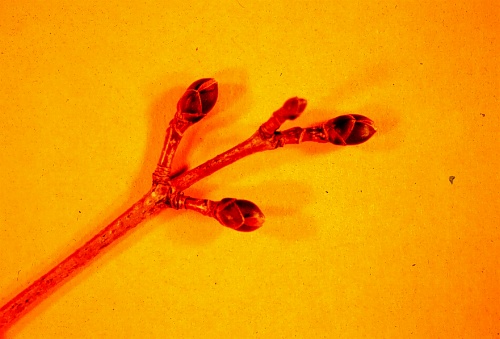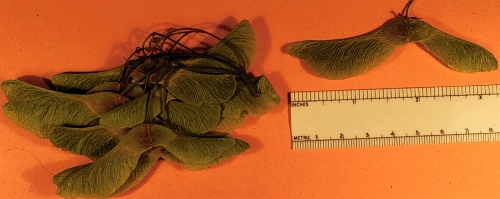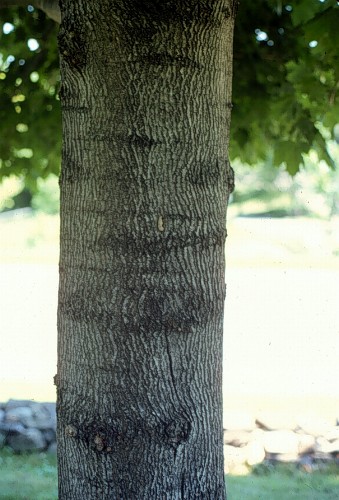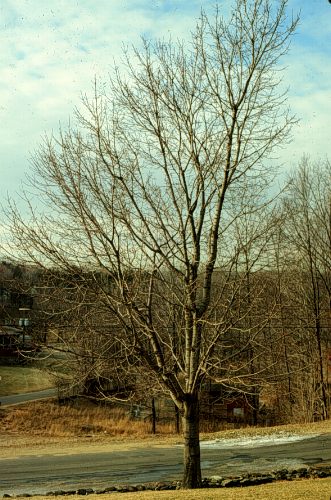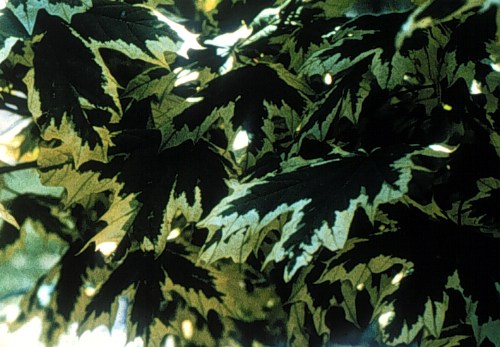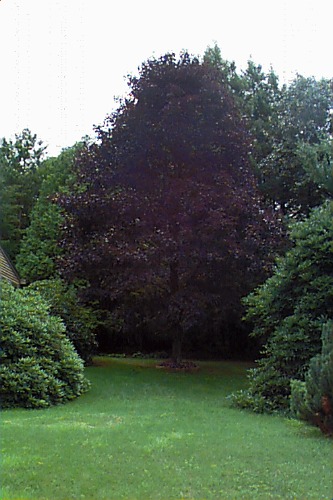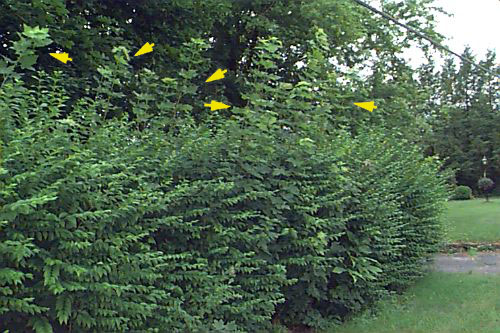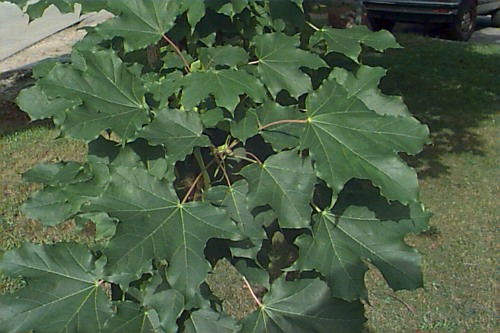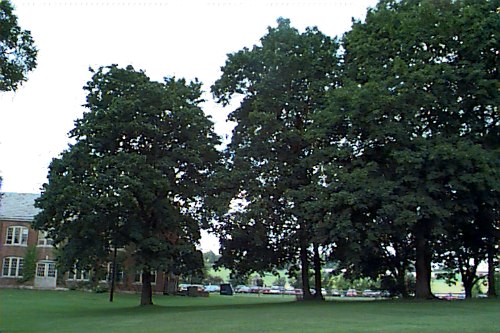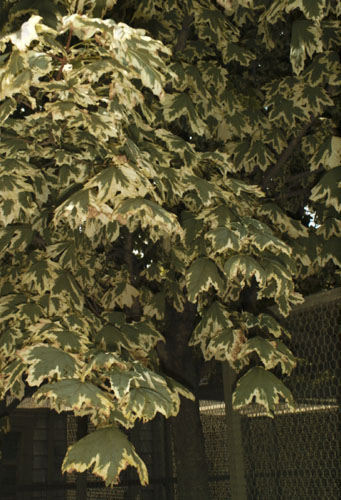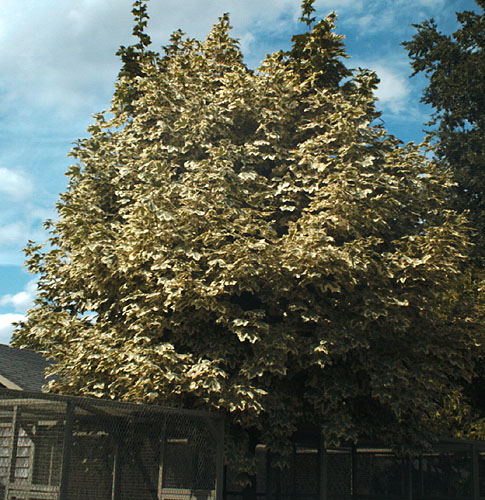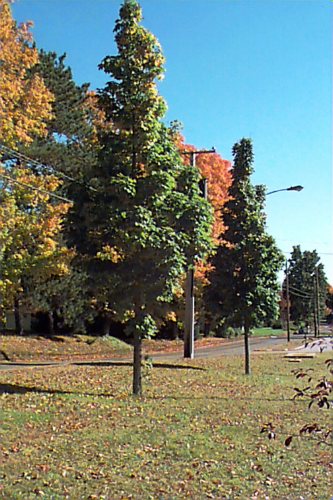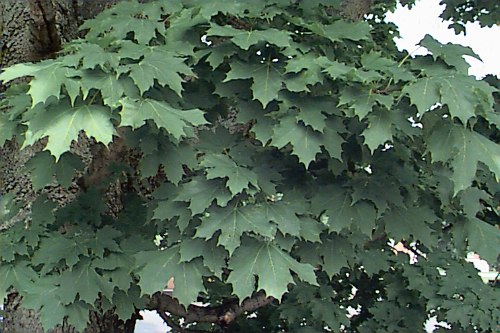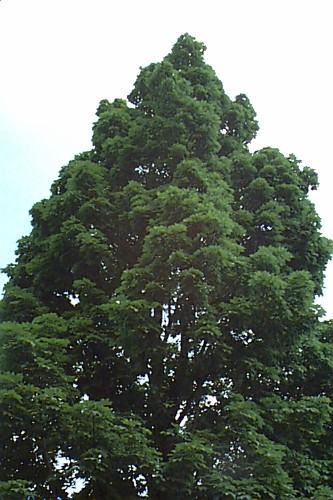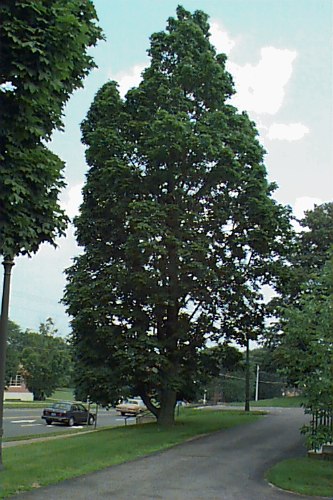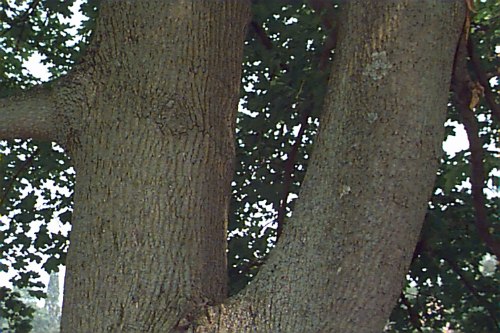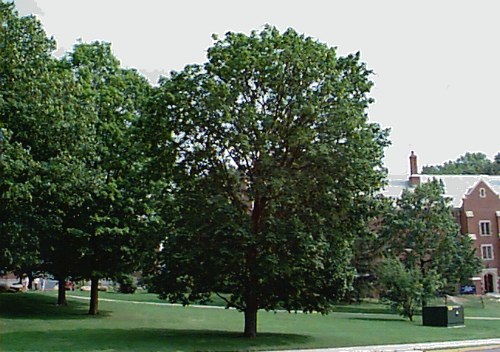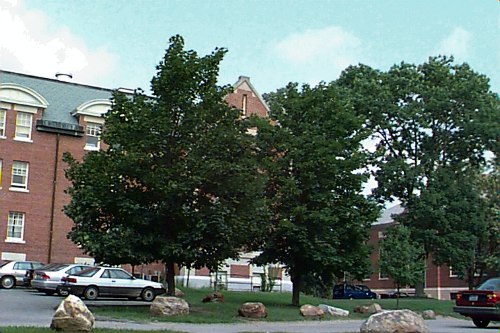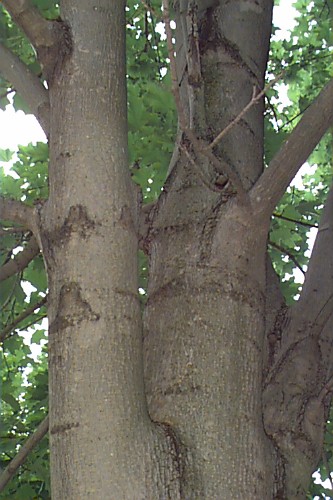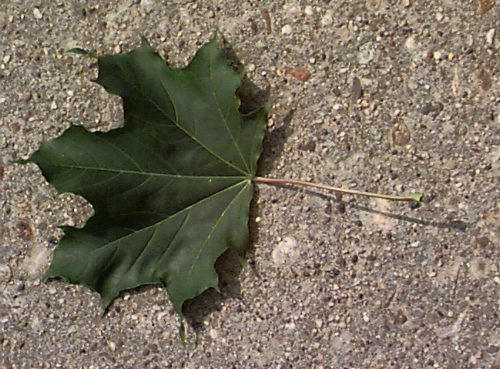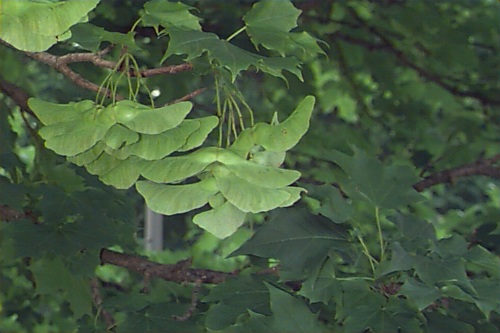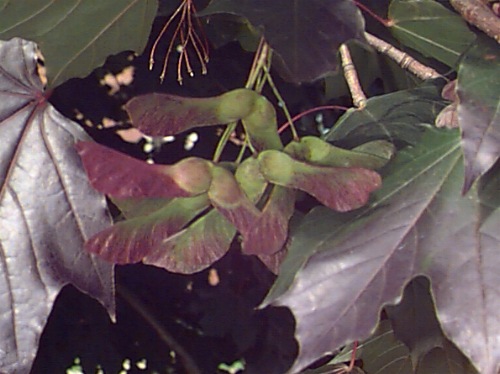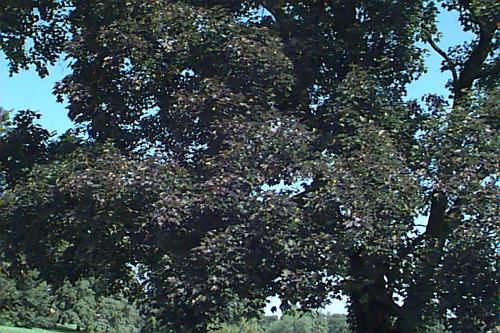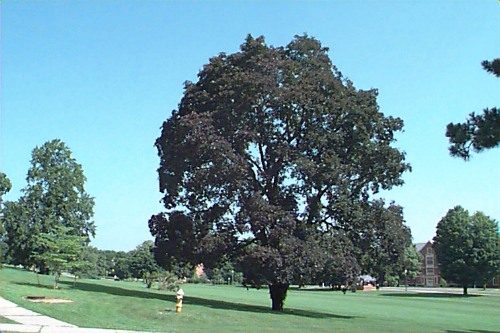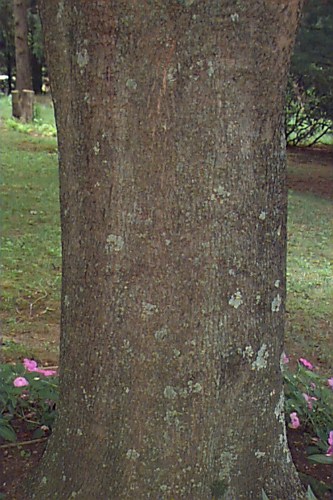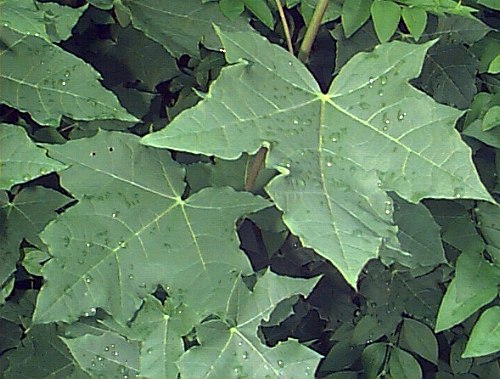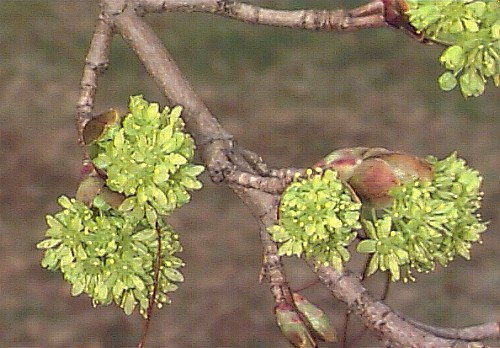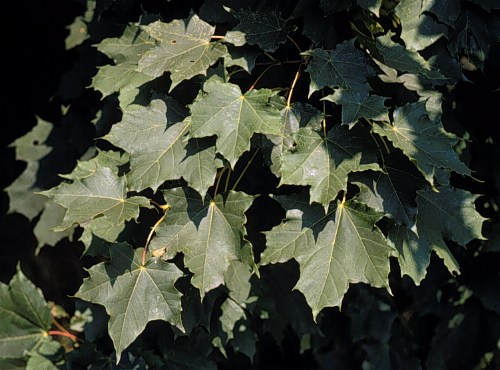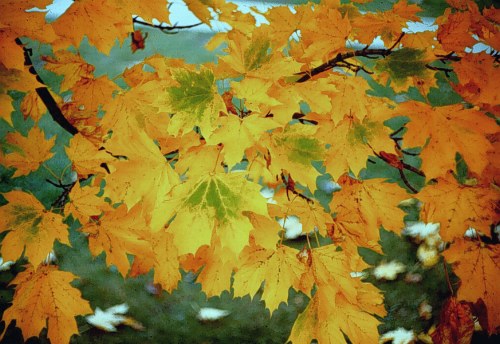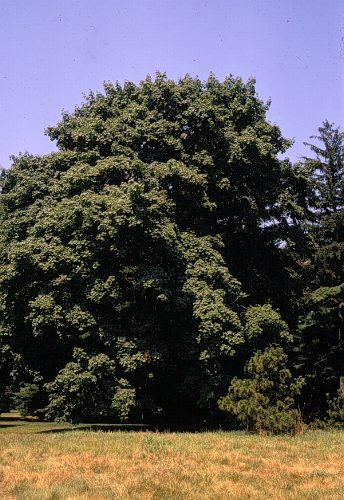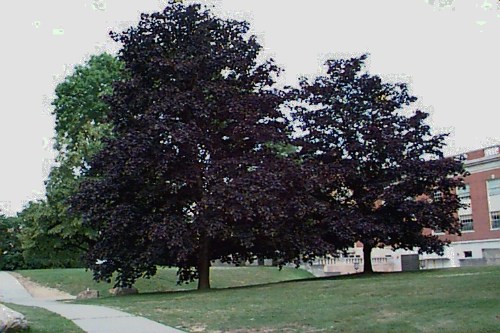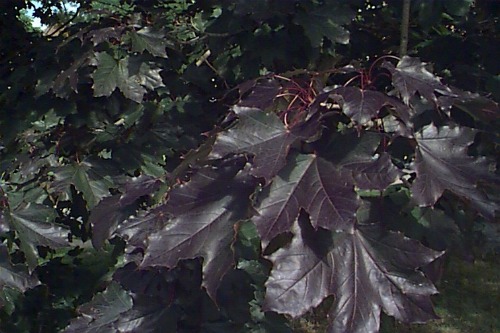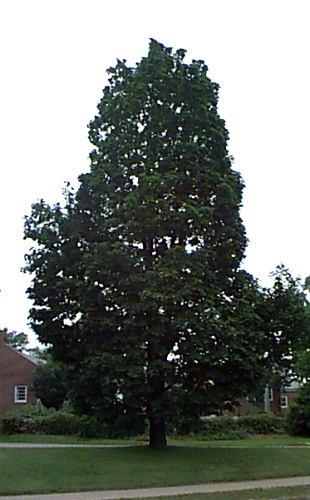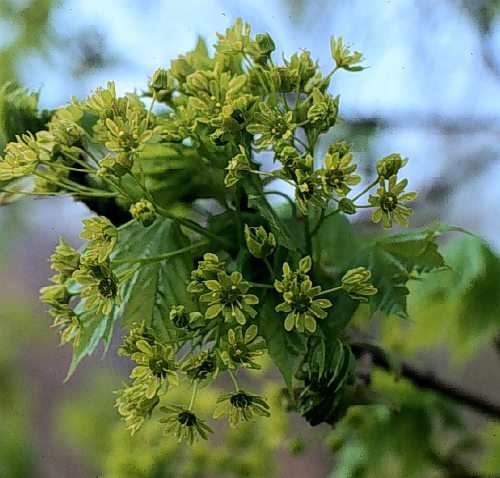Acer platanoides
Norway Maple
Aceraceae
ExpandHabitat
- native to Europe
- widely naturalized in the United States
- hardy to zone 3
- Special Note: This species has demonstrated an invasive tendency in Connecticut, meaning it may escape from cultivation and naturalize in minimally managed areas. For more information, .
Habit and Form
- medium to large shade tree
- deciduous
- rounded crown, densely branched
- typically 40' to 60' tall, but can reach 90'
- often wider than tall when open grown
- grows rapidly when young
- medium-coarse texture
Summer Foliage
- opposite, 5-lobed leaves, 4" to 7" across
- uniform dark green color
- milky sap visible when petiole is broken
Autumn Foliage
- often colors late (end of October)
- can be a good, uniform yellow
Flowers
- blooms in April
- numerous small, yellow-green flowers
- showy, especially for early spring
Fruit
- samaras, 1.5" to 2" long
- turn green to tan
Bark
- greyish-black
- shallow ridges and furrows
Culture
- adaptable to many soils
- easily transplanted
- full sun is best
- tolerant of urban conditions for a maple
Landscape Uses
- shade tree for lawns, parks, industrial parks
- needs adequate space to develop
Liabilities
- creates very dense shade which kills out turf
- grows too large for residential landscapes
- shallow root system damages sidewalks
- verticillium wilt
- can be prone to bark splitting
- seeds freely, get many weed seedling trees
ID Features
- milky sap in petiole and leaf veins
- large, plump green-maroon buds (compare with Acer pseudoplatanus which are always green)
- leaves larger than those of Acer campestre
- leaves broader than those of Acer saccharum
Propagation
- by seed
- cultivars by grafting, some by tissue culture
Cultivars/Varieties
'Columnare', 'Erectum', 'Olmsted' - Some confusion exists as to
the exact characteristics of these 3 cultivars. All are upright, columnar
forms 10' to 20' wide and 40' to 60' tall. Generally comprised of a single
central trunk with short lateral branches. These forms of Norway maple are
good choices for street trees.
'Crimson King' - A very popular cultivar that many consider to be overused. Leaves emerge bright crimson and deepen to maroon which persists throughout the growing season. Slower growing than the species. Fall color usually a bizarre brownish-maroon.
'Drummondii' - Possesses light green leaves with with a prominent white edge. Somewhat slow growing, developing an oval to rounded head. Frequently reverts and green sections must be removed or they will overgrow variegated sections because of their greater vigor
'Emerald Queen' - Increasingly popular for its upright, rounded habit ( to 50' tall and 40' wide) and yellow fall color. Commonly planted.
'Globosum' - A truly dwarf form (15' to 18'). Develops a compact, rounded,
dense head. Typically grafted at around 6 feet. An excellent choice for planting
beneath utility lines.
'Schwedleri' - An old cultivar that is a parent of many of the newer red foliage forms. Grows larger and more rapidly than 'Crimson King'. Foliage emerges maroon, but turns black-green as it matures. Color effect is more subtle than 'Crimson King' and is easier to use in landscapes.
'Summershade' - A handsome shade tree with a rounded mature form (to 40' tall and wide) and good foliage substance. Marketed as being fast-growing and resistant to summer heat. Fall color has proved to be inferior to other forms.
